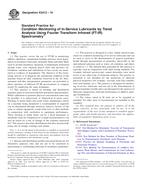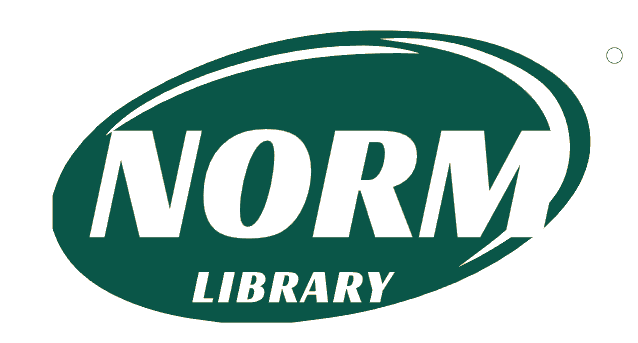
ASTM E2412-10
Original price was: $86.00.$52.00Current price is: $52.00.
Standard Practice for Condition Monitoring of Used Lubricants by Trend Analysis Using Fourier Transform Infrared (FT-IR) Spectrometry
standard by ASTM International, 05/01/2010
1.1 This practice covers the use of FT-IR in monitoring additive depletion, contaminant buildup and base stock degradation in machinery lubricants, hydraulic fluids and other fluids used in normal machinery operation. Contaminants monitored include water, soot, ethylene glycol, fuels and incorrect oil. Oxidation, nitration and sulfonation of base stocks are monitored as evidence of degradation. The objective of this monitoring activity is to diagnose the operational condition of the machine based on fault conditions observed in the oil. Measurement and data interpretation parameters are presented to allow operators of different FT-IR spectrometers to compare results by employing the same techniques.
1.2 This practice is based on trending and distribution response analysis from mid-infrared absorption measurements. While calibration to generate physical concentration units may be possible, it is unnecessary or impractical in many cases. Warning or alarm limits (the point where maintenance action on a machine being monitored is recommended or required) can be determined through statistical analysis, history of the same or similar equipment, round robin tests or other methods in conjunction with correlation to equipment performance. These warning or alarm limits can be a fixed maximum or minimum value for comparison to a single measurement or can also be based on a rate of change of the response measured (1). This practice describes distributions but does not preclude using rate-of-change warnings and alarms.
Note 1 – It is not the intent of this practice to establish or recommend normal, cautionary, warning or alert limits for any machinery. Such limits should be established in conjunction with advice and guidance from the machinery manufacturer and maintenance group.
1.3 Spectra and distribution profiles presented herein are for illustrative purposes only and are not to be construed as representing or establishing lubricant or machinery guidelines.
1.4 This practice is designed as a fast, simple spectroscopic check for condition monitoring of in-service lubricants and can be used to assist in the determination of general machinery health through measurement of properties observable in the mid-infrared spectrum such as water, oil oxidation, and others as noted in 1.1. The infrared data generated by this practice is typically used in conjunction with other testing methods. For example, infrared spectroscopy cannot determine wear metal levels or any other type of elemental analysis. The practice as presented is not intended for the prediction of lubricant physical properties (for example, viscosity, total base number, total acid number, etc.). This practice is designed for monitoring in-service lubricants and can aid in the determination of general machinery health and is not designed for the analysis of lubricant composition, lubricant performance or additive package formulations.
1.5 The values stated in SI units are to be regarded as standard. No other units of measurement are included in this standard.
1.6 This standard does not purport to address all of the safety concerns, if any, associated with its use. It is the responsibility of the user of this standard to establish appropriate safety and health practices and determine the applicability of regulatory limitations prior to use.
Product Details
- Published:
- 05/01/2010
- Number of Pages:
- 24
- File Size:
- 1 file , 600 KB
- Redline File Size:
- 2 files , 1.2 MB
- Note:
- This product is unavailable in Russia, Ukraine, Belarus




